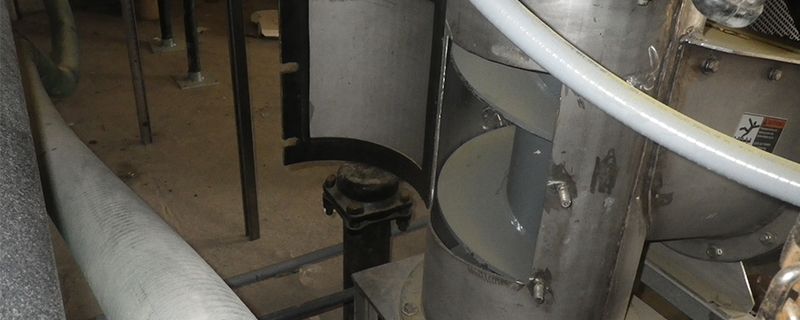Screw conveyors are compact in design and easily adapt to congested locations for conveyance of materials in a horizontal, inclined, or vertical screw conveyor. Inclined screw conveyors are widely used, however they are not recommended for inclines over 25 degrees. Once the incline of the screw conveyor exceeds 25 degrees, issues with product “fall-back” and gravity require a very tight pitch screw and higher RPMs resulting in inefficiencies and greater shearing of the product.
Even more than their inclined counterparts, the vertical conveyor is quite a space saver. This type of conveyor uses the same screw flights or spirals as other screw conveyors, full-pitch in either shafted or shaftless versions. The maximum height for the vertical screw conveyor is dependent on the volume of material to be conveyed, but the practical limitation is about 50 feet. This is due to high Hp requirements and spiral elongation conveying product to this elevation gain. It is possible to go vertical to near the 50’ limit, then use a short horizontal conveyor to feed another vertical conveyor to gain greater height.
A pulling drive is generally used at the top of the vertical screw conveyor. Bottom drives are avoided as they will experience shaft seal wear which eventually will need replacement. If the seal is not properly replaced, damage can occur to the drive shaft and gear reducer. This potential issue is eliminated by use of the pulling drive. The shafted vertical conveyor with a pulling drive has a tail shaft that holds the non-drive end of the screw in the tail bearing. The shaftless version is not connected at the non-drive end, however tall ones may employ internal anti-friction discs on the spiral tail to eliminate elongated spiral contact with the trough bottom.
Vertical screw conveyors do have their limitations and are not recommended to transport all types of materials. Dried biosolids or dewatered sludge works well in the vertical conveyor, however lower solids materials like screenings or grit are not recommended even when they are dewatered. The vertical acts as a compactor and releases more free water from these products. This free water accumulates in the trough. Raggy screenings and fine grit are notorious drain cloggers making then less than ideal candidates for vertical conveying.
There are a lot of variables to consider when choosing the right conveyor to transport solids at a water or wastewater plant. It is important to consider the material to be conveyed (type, solids, density) the volumes to be conveyed, and the horizontal and vertical distance to be covered and space available for that route. Other factors such as contamination, odor, and maintenance access can also be considerations. When making this choice, it is best to come equipped with this information to get the best and most prompt recommendations.
Greg Hyde joined the JMS Sales and Marketing Team as Product Manager | Material Handling. Greg has over 30 years of experience in material handling systems, having held high level engineering, sales and business management positions with large full line conveyor manufacturers. He is responsible for overall support and growth of the JMS Bio-HANDLING product line. Outside of work, Greg is a founding member of the “Jammin’ 4 Water” (Water Charities Fundraising Inc.). In regards to his position, Greg says, “ JMS has a rich history in design, quality and material handling. I’m excited to be part of this great team and look forward to guiding the Bio-HANDLING product family for long-term growth.”

